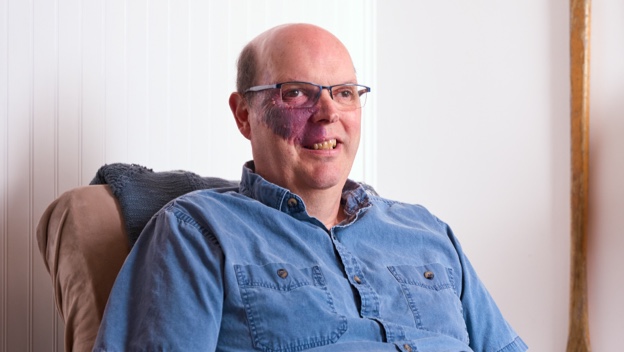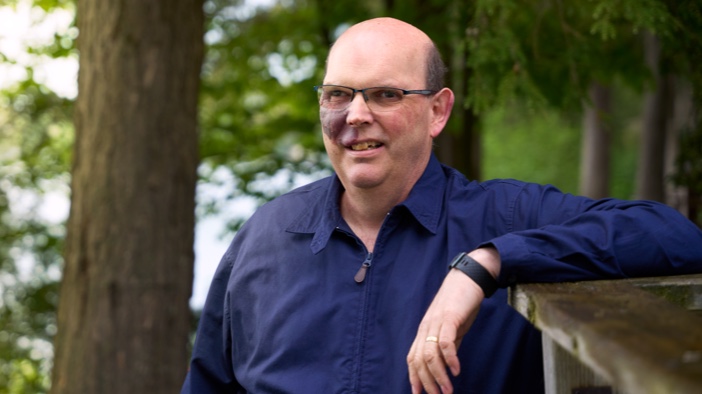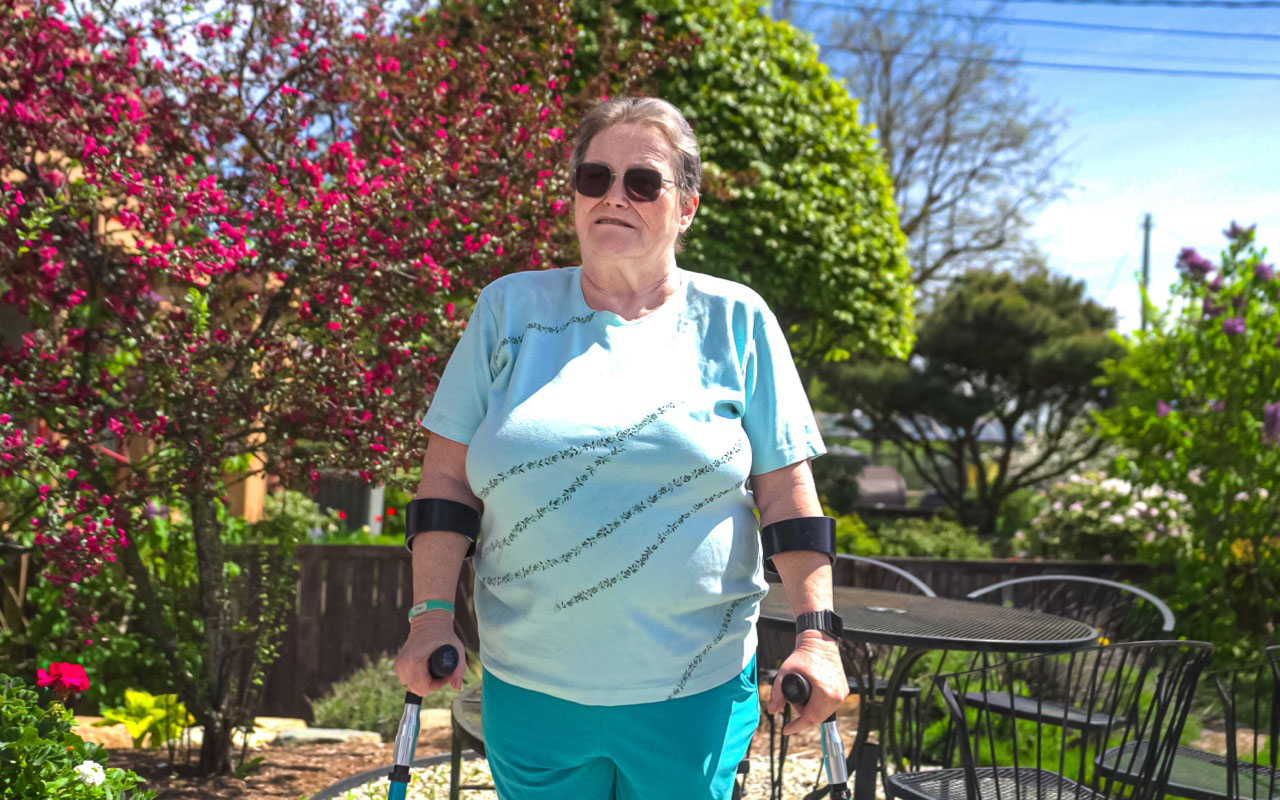Manley has always been a man of many talents, professions and athletic interests—and most of all, a man who is self-motivated. He’s had many careers, ranging from an environmental project manager to a health and safety auditor, and from a hockey referee with Hockey Canada to an educator. He was also a triathlete, hiker, skater and cyclist, among other athletic passions.
And then it all stopped right as he approached his 50th birthday. “No hiking, no walking, no skating, no running, no swimming, no cycling,” Manley reflected. It began with muscle weakness in his throat, mouth and body. “I had a hard time talking. I couldn’t swallow and I thought, well, maybe I’m allergic to something.”
Manley’s journey began with visits to a speech pathologist, three general practitioners, a neurologist, a neuromuscular specialist, a dermatologist and a naturopath. Each time, he’d share his history of symptoms and all of his research, but wasn’t getting any real answers. Finally, in 2021, after eight years of endless doctors’ visits and more debilitating physical challenges, he finally had an answer: It was myasthenia gravis (MG).
I’m not one to settle. I’m not one to just say, ‘Oh, that’s just the way it is.’ So, I kept going.
“What’s next?” Manley asked the doctor who diagnosed him with MG. “I’m a what’s next person. OK, I got a diagnosis—what does that mean? What do I do? What’s my physiotherapy plan? What’s my treatment plan? What will the next three years look like?”
Manley didn’t want promises or guarantees; he simply wanted a plan. He had worked so hard on researching his symptoms to help diagnose his own condition, and it had taken its toll on his wife and three sons—his bedrock of support. So now that there was a diagnosis for what was happening, it was time to create a plan. “I’m not one to settle. I’m not one to just say, ‘Oh, that’s just the way it is.’ So, I kept going.”
Manley has been tracking his symptoms for years. Part of making a plan has been to know as much as possible about his MG symptoms over time. He keeps notes using his own tracking method with a calendar notebook and his phone. He can tell anyone what he was able to do or not do on any given day and how he was feeling. Manley uses his notes to chart his progress and setbacks, such as how long he could walk or whether he tried a stationary bike, and shares this information with his healthcare team, as well as his family and friends.
People with MG can have different experiences and many symptoms vary from day to day or even throughout the same day.1 Using similar symptom-tracking tools may help people gain control of their MG journeys, just like how it’s helped Manley. “If someone wants to validate what I’ve done, I just go to my calendar and say, ‘Yeah, on that date about a year and half ago, I was still reliant on my walker or the wheelchair. And last June, we went for a family hike with the dogs.’”
Staying true to who he is, Manley uses his symptom-tracking method to take an active role in his own healthcare plan. After he was diagnosed in 2021, he took the initiative to reconnect with his physiotherapy team. “I get up every day, and I stretch and I exercise. Even when I couldn’t, I still tried because I knew my muscle memory would still be there.” His doctors put him on a treatment plan that he feels comfortable with, and it has allowed him to walk and cycle recreationally. “Once all of my body started to communicate again, I would naturally start walking, swimming and cycling—but not at the level that I used to.” Continuing to track symptoms after diagnosis is an important part in helping the healthcare team know if a treatment plan is working or if something different is needed. Symptom tracking can be an aid in helping patients with MG communicate their needs to their healthcare team, just as it has with Manley.
Now, I’m advocating for MG patients.
Mapping out what he wants to do and what he can do is a strategy that helped him through his most challenging times, when he was simply trying to figure out how he’d get to a doctor’s appointment or how close he would need to park to get to the entrance. “I mentally map out what I want to do, what I can do, and I share those strategies with anyone who’s willing to listen to me. And now, I’m advocating for MG patients.”
In addition to trying to get a little stronger each day, Manley’s passion is fighting for greater awareness of MG and the rare disease community. In March of 2023, he was recruited as the Executive Director to the board of the MG Society of Canada. He spends his days working with patient advocacy groups and business leaders.
For Manley, awareness is not just about the physical and mental toll that MG can take on people living with the condition and their supporters—it’s bigger than that. He feels there are economic burdens on families and the community. “I’m no longer contributing to the economy the way I used to; my wife retired from her 31-year teaching career to help care for me. We need to create better awareness because the greater community has no comprehension of the impact that a rare disease has on everyone,” Manley noted.
There’s not a wall big enough that’s going to keep me from doing what I really want to do.
Manley has a lot of hope for his future and for the future of others living with MG and other rare diseases. “What I’m trying to do is apply what I know and who I’ve worked with and educate them. I’m just finding more and more people don’t understand this community. And if you don’t have the means to communicate like I do, you become isolated; you have mental health challenges. So, I’m doing my little share if I think I can make a difference.”
When Manley thinks about his journey ahead in his 60s, he sees more advocacy, and hopefully more of what he’s been able to do in his 50s. “I’m not going to get back to my 40s or 30s or 20s, but it’s going to be the best version of me in my 60s as I can make it. There’s not a wall big enough that’s going to keep me from doing what I really want to do.” His next goal? Joining his eldest son to climb the CN Tower for the World Wildlife Fund.









